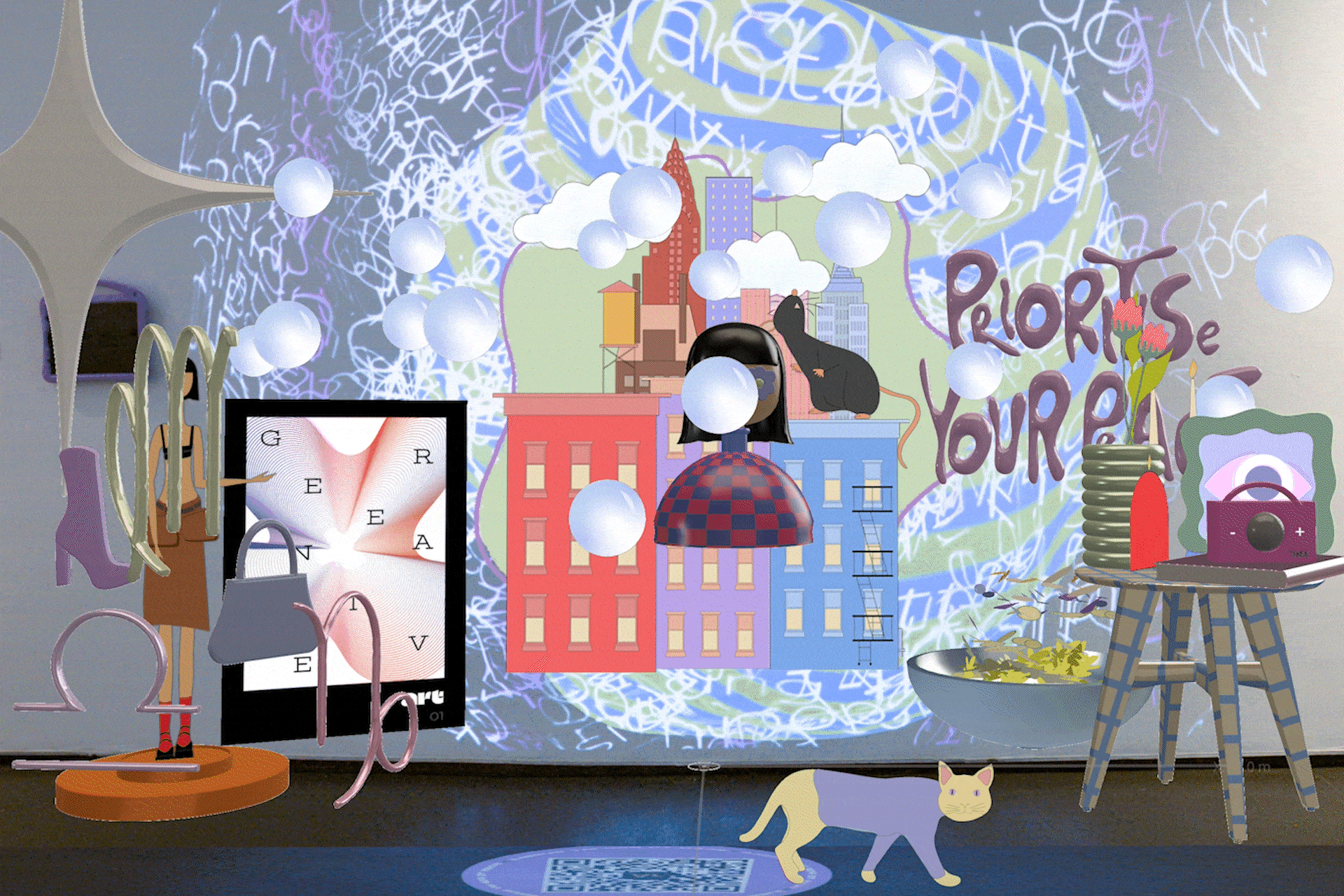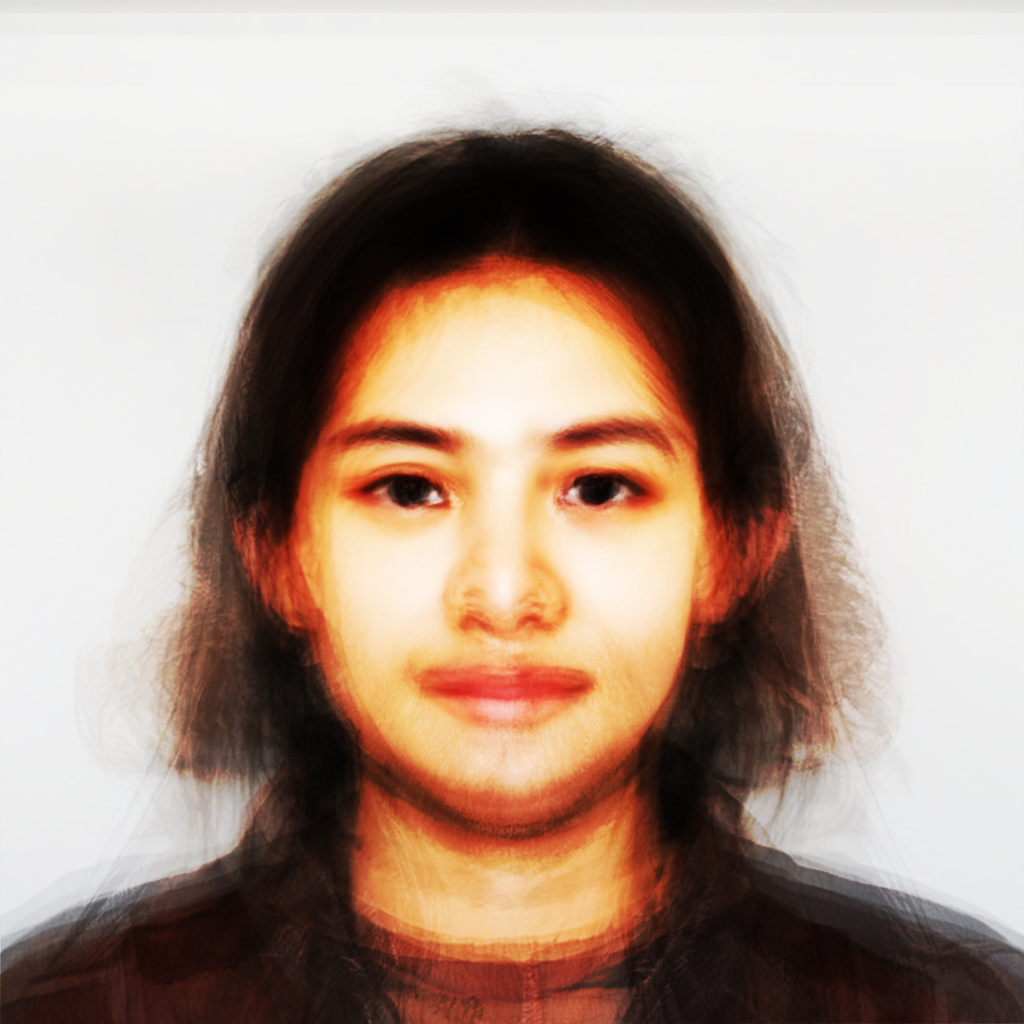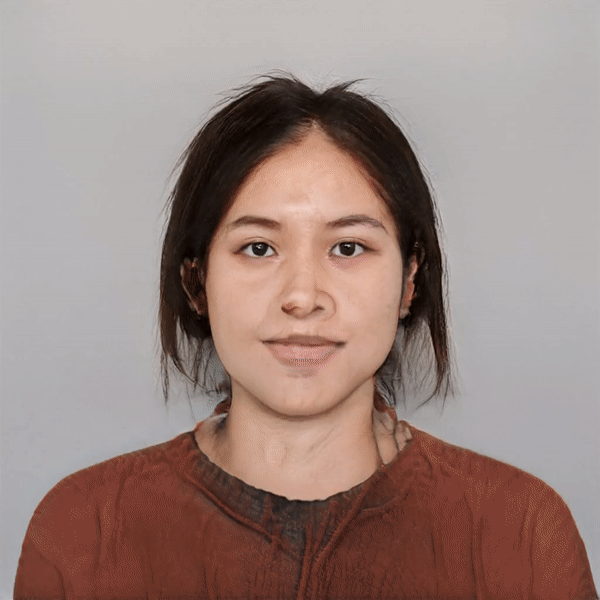Pujarini Ghosh is Examining the Algorithms That Shape Us
Words: Rob Corsini
Pujarini Ghosh is a Bombay-raised, Brooklyn based artist whose work uses technology to explore the way that social media and algorithms shape us. Her work explores culture and identity, through immersive, multi-sensory experiences that straddle irl and online.
Pop My Bubble, her recent exhibition, used augmented reality to take audiences inside her personal bubble of content - filtered directly towards her by the social media algorithm. Using illustration, projection, purpose built-websites and QR codes, Pujarini created a physical space that was brought to life through the power of technology.
Pujarini’s past work includes ‘You and I’ an interactive art experience co-created with Yebin Han, which addressed the biases inherent with AI. The artwork combined AI-generated imagery with a live feed of the installation’s audience, overlaying these images to bridge the gap between the digital, imagined space and the reality of the experience.
In her conversation with Polyester, Pujarini talks about being a creative technologist (and what that really means), the holy trinity of social media platforms and how they’ve shaped her, and what the future holds for her - and if it can be gleaned from astrology.
Can you give me an introduction to yourself as an artist?
So, I’d say that I’m a creative technologist and a digital artist. A lot of people immediately wonder, what the hell does a creative technologist do? Mainly because it's such a new term, but it's as simple as someone who blends art and technology together to create any form of artwork. I just love tinkering with new technologies and new mediums.
Where do you think this love of technology came from?
Being a 90s kid, I've grown up online - seeing the evolution of the internet and then into social media. I'm definitely drawn back to the retro, inspired aesthetics of that era. But at the same time, I'm constantly looking at my artwork and questioning the algorithms. Even though I do enjoy AI, and I use it for a lot of my work, when it comes to the internet and social media - I'm always thinking: How is this shaping me? Are they telling me who I should be? Who should I follow? What should I be doing? All instead of giving me the freedom to learn more or to explore independently.
Why don’t we jump into your work – I know you’ve recently run a show called Pop My Bubble – can you tell me where the idea came from for that?
So, Instagram is my happy place. I was playing around and, truthfully, spending a totally unhealthy amount of time on social media – TikTok is my latest obsession. Mainly I’m using it for educational purposes – I love seeing what other creators are making, finding out how they do it, so I can learn from them.
But at the same time, I’d just moved to New York and my feed changed. I stopped getting news from back home. My mum would call me and say “Something has happened, do you know” and the answer was always no, I had no idea. Even though I spend all my time on social media, none of this popped up because the algorithms instantly adapted to my new location and started showing me the things it thought I wanted to see rather than what I actually wanted to see.
So I felt like I was trapped in this feedback loop, being shown the same things again and again, which is where the idea for Pop My Bubble started. I wanted to translate that experience into my art, but also make an effort to actually expand my bubble.
So how did Pop My Bubble actually work? Take me through the space.
Pop My Bubble was an AR experience. [AR or Augmented Reality is a technology that takes interactive, computer-generated imagery and places it on top of the real world.] The audience could come into the space, explore it, and they’d see different spheres popping up each with some content from my bubble. I love illustration, and so I wanted you to see the bubbles in a really visual way. Different bubbles had different designs, the one about New York had a rat sitting on top of it, the fashion bubble was a girl changing clothes.
People could touch a bubble to burst it, and it brought them to a web experience where they could answer a question. Something like: tell me what book you’re reading; a new place to visit; something exciting to try. As those answers accumulated, they helped to expand my bubble and give me new things to explore.
A big theme of the show is how Social media shapes us – what are the platforms that have shaped you particularly?
Obviously Myspace. You know how you could play with the backgrounds – that was the beginning of web designing for me, I really enjoyed doing that. Then Facebook. But I feel like for me, Instagram has shaped me the most because I’ve been on it since 2012. Before I was a creative technologist, I was a fashion stylist. That's when I’d post things on Instagram all the time. I haven't deleted a single thing I've posted, so it's cool to look back at it. It really has shaped me.
The big question: Kiss, Marry, Kill. TikTok, Instagram, MySpace
Okay, I’d say Kill TikTok because I think that’s just not good content to consume in my opinion, I’ll just doomscroll for hours but I won’t learn anything. Marry Instagram, definitely, because I have an unhealthy obsession with it. And I’d kiss MySpace because I learnt visual design from it, so that’s lovely.
Looking forward, what are your next dreams as an artist?
That's a tough question because I have a huge to-do list. I’m passionate about astrology, like I use astrology as therapy. So I’m trying to build a universe around that, something that feels more personal, almost astral therapy. That’s the next project I’m really excited about.






